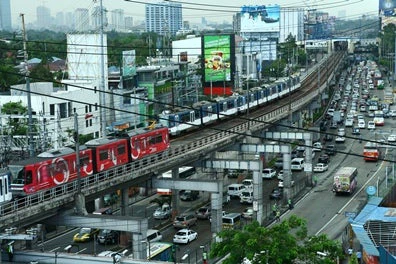
From my house in northern Quezon City, I drive more than two hours every day to get to the office in Bonifacio Global City, which is about three cities away where I come from, and two cities away from the capital Manila. It’s a journey that should only take around half an hour under light traffic. That is a total of four hours on the road a day, if there is no road accident or bad weather. It takes me an hour longer whenever I use the public transport system. Along with hundreds of thousands of Metro Rail Transit (MRT) commuters, I have to contend with extremely long lines, slow trains, and frequent delays due to malfunctions. This has been my experience for several years. Many of us might be wondering: why have these problems persisted?
Metro Manila and other major cities are experiencing major traffic congestion because high economic and population growth in the last decade were not accompanied by commensurate and timely investment in infrastructure. In the last four years, the government fell short of its planned infrastructure spending by an average of PHP50 billion per year or roughly $1.1 billion. A number of public-private partnership (PPP) projects have also been delayed at various stages from planning to implementation. In particular, the much needed LRT-MRT common station has been delayed for five years now since inception as the two operators have yet to agree on where to build it.
To compensate for the lack of infrastructure, the government has implemented some stop-gap short-term measures to ease congestion, but some of these have resulted in inadvertent and occasionally severe consequences. For instance, I’m sure that all of us motorists who use C5 highway (which traverses from south to north of Metro Manila), remember how horrible traffic was there some days last year—the unintended consequence of a more restrictive truck ban. The rush to deliver goods using poorly-maintained trucks driven by sleep-deprived drivers resulted in major road accidents. Most of them happened at night or early morning when the truck ban was lifted. I remember two instances last year when it took more than five hours to get to work due to accidents involving trucks that were not cleared up in time for the morning rush hour.
All of these contribute to an estimated productivity loss of around PHP2.4 billion ($54 million) a day or more than PHP800 billion ($18 billion) a year - an amount enough to fully plug underinvestment in infrastructure, education, and health. In truth, the country’s long history of underinvestment in infrastructure is one reason why many Filipinos are in poverty. A typical Filipino farmer has limited access to reliable roads, bridges, and irrigation to produce better crops and connect to markets in the cities. This contributes to very high food prices, which reduce real income of all Filipinos. For instance, Filipinos pay double for rice compared to Thais or Vietnamese.
All of these investments in infrastructure, alongside investments in health and education, will cost money. However, in the last seven decades, the government has not raised and sustained enough revenues to fund these. The current system cannot raise the necessary revenues to fund important investments because it is quite complex, inequitable, and inefficient.
The good news is that higher revenues do not necessarily require higher tax rates. For one, the government can raise around PHP530 billion ($12 billion) in revenues solely by improving tax administration. This means improving tax collection efficiency and plugging leaks in the tax system, without modifying or increasing tax rates. However, even if corruption and tax evasion were eliminated, tax revenues would still be inadequate to make up for the country’s investment deficit. This means that policy reforms are needed as well.
However, raising tax revenues need not be painful for society as a whole. Any change to the tax system should be done in an equitable way so that the rich pay more than the poor relative to their income, and that two individuals with the same income pay the same amount of taxes. This means taxing goods and services consumed more by richer people, such as gasoline, and raising property valuation since properties are highly correlated with wealth.
Of course, these reforms need to be accompanied by transparency and accountability measures to ensure that public funds are properly used. As taxpayers, we all want to see how our hard earned taxes are being spent, and see and feel the benefit from these public goods. The government has already started this initiative with open data, where some government data is made publicly available in user-friendly forms. This must be sustained after this administration.
Transportation affects nearly all aspects of the daily lives of Filipinos, from direct effects like mobility and commute time to indirect effects like its impact on food prices. More investment in highways, skyways, MRT, and bus systems, financed by a simpler, more equitable, and more efficient package of tax policy reforms, would be a significant step in the right direction. Don’t you think it’s about time that we cut travel time by at least half?


Join the Conversation